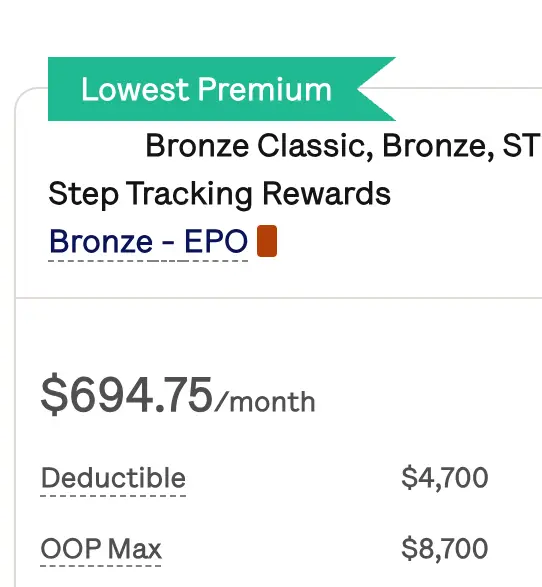What’s the Difference Between a Deductible vs. Copay?
A deductible and copay are terms used to describe the costs associated with maintaining your health insurance. A deductible is the amount of money you are required to pay out-of-pocket before your insurance takes over and covers the costs. A copay is a fixed amount you must pay for medical care at the point of service.
Deductibles can be thousands of dollars but with Mira, you don’t need to meet a deductible. You pay a standard monthly membership fee of $45 per month and get access to affordable lab tests, urgent care services, and prescriptions.
Difference Between a Deductible vs. Copay
Deductibles and copays are two important parts of your health insurance plan. Below we explain the difference between a copay and deductible:
- Deductible: A deductible is the amount of money you are required to pay out-of-pocket before your insurance begins to pick up the cost of your health services. Deductibles can range anywhere from $0 to over $8,000 for an individual.
- Copay: Your copay is the amount you are responsible for paying at the time of your health service, typically with an in-network provider. A copay is a flat fee that differs depending on what type of doctor you see.
Additional Health Insurance Terms
In addition to copay and deductible, it is important to know a few additional terms to help you fully understand your health insurance. Below we define these terms and explain how they affect the cost of your health insurance.
- Premium: A premium is the monthly fee you are required to pay to maintain your coverage throughout the year. You need to pay your monthly premium both before and after you have met your deductible.
- Coinsurance: Once you meet your deductible, you will only be responsible for paying a percentage of the total cost of your medical expenses. The percent of costs that you are responsible for is known as your coinsurance. Most plans have a coinsurance of about 20%.
- In-network provider: An in-network provider typically accepts your insurance plan. As a result, you will likely be able to pay your copay when you go to these doctors.
- Out-of-network providers: An out-of-network provider may not accept your health insurance. Before you meet your deductible, you will likely need to pay the full price of service with an out-of-network provider. Depending on your plan type, after you meet your deductible, you may be able to pay your coinsurance at out-of-network providers.
- Out of pocket annual limits: An out-of-pocket limit is the maximum amount of money you can pay for the total costs of your healthcare throughout the year. These limits include the cost of your deductible, copayments, and coinsurance, but not your monthly premium. After you have reached your maximum, the insurance provider will pick up 100 percent of the costs of your covered care. However, you will still be responsible for paying your monthly premium.
Understanding Your Deductible
The average deductible for an individual in 2020 was $4,364, but deductibles can range from $0 to over $8,000. In general, the higher your monthly premium is, the lower your deductible is. Plans that have lower monthly premiums tend to have higher deductibles.
While paying thousands of dollars out-of-pocket before having insurance may sound daunting, many health insurance plans still cover the costs of certain primary and preventative care services before you meet your deductible.
All Marketplace health plans pay the full cost of certain preventive health services before meeting your deductible. Your insurance plan may also have a separate deductible for prescriptions. Some examples of preventative services covered prior to meeting your deductible include:
- Immunizations
- STI Screening
- Blood pressure screening
- Cholesterol screening
- Tuberculosis screening
- Tobacco and alcohol screening and counseling
If you need access to health services that are not covered before you meet your deductible, Mira may be an excellent option for you. For only $45 per month, you can get access to low-cost urgent care, prescriptions, and more. You do not need to meet a deductible to start seeking care.

Get affordable doctor copay without paying insurance premiums
Join 39,000 people and get Mira, the best alternative to traditional insurance. Enroll and use immediately. Plans start at only $45/mo.
Ashley Brooks works in Healthcare Consulting and graduates with her MPH in September of 2022 from George Washington University, but graduated with her B.S. in Health Science from James Madison University in 2019. Ashley has been with Mira since June of 2021 and shares the passion for creating affordable healthcare coverage for all!
